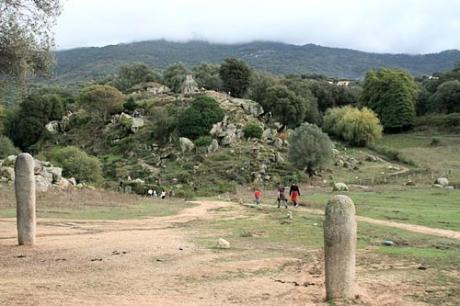
The Discovery of Biological Paternity
With the domestication of animals by women in the Neolithic times and the human observation of the tamed animals inside the villages’ enclosures over a very long period of time, as well as an advanced stage of human intelligence, the connection between copulation and procreation among animals, and then among humans came to be known. The discovery that it is men who impregnate women and not divinities or spirits or women by themselves, goes back to only 6000 years ago. As a result of this discovery, the egalitarian male-female relationship of the past millennia underwent radical transformations in all domains of social life. One can compare this discovery to a lamp, which by being turned on let humanity see that men too had a part, albeit small, in the procreation and continuity of species. Due to the fact that biological paternity is not exactly perceptible, its discovery was an historical event.
The discovery of biological paternity led to men’s desire and determination to create the institution of social paternity, which in the beginning needed surplus products and wealth to be realised among a minority of them. This determination eventually led to the Urban Revolution of the Copper and Bronze Ages, during which times a set of invention and discoveries, such as animal-plough, metallurgy and pastoralism, were initiated entirely by motivated men, improving agriculture and making the accumulation of surplus goods, i.e, private property, possible. Agricultural villages were transformed into large, socially complex, societies with advanced division of labour and specialization, long-distance trade, a ruling class, and a State. Men became socially superior to women, although the age-old matrilineal system of lineage persisted in all social classes, preventing the establishment of patriarchy in its narrow sense.
The Dialectic of Fatherhood
Following this discovery, men’s consciousness took quite a different turn. Probably nothing changed in the consciousness and outlook of women for whom childbirth had always been identified with procreation ; but those of men were disrupted. Since this discovery, a profound desire and a determination were created in men to socially participate in the continuity of species like women. The problem was that the discovery of the biological paternity revealed simultaneously an important form of physical alienation in men: alienation of semen. Physiologically, the child is detached from the male. Any man could have supplied semen to a pregnant woman. While maternity is realized through the labours of pregnancy and childbirth, paternity is an idea, a problematic concept.
In matrilineal societies that were aware of biological paternity, the man was not excluded as lover, but as immediate parent (he was a maternal uncle, a brother and a son – via a woman.) Voila the exclusion that men simply did not want to tolerate, and history demonstrates how far they went to escape from the uncertainty of their paternity, both at the conceptual level and at the level of social institutions. As Mary O’Brien explains in The Politics of Reproduction, the masculine usurpation of child and the associated idea of social paternity emerge from the alienation of semen. With the knowledge of the biological paternity, copulation becomes an act during which a man is simultaneously included in the process of procreation and excluded from it. It was for resolving this opposition that men looked for a mediation, and this mediation was accomplished by usurping the women’s children, as an affirmation of male’s right of property. In other words, social paternity is a unit of thought, the knowledge of the connection between sexuality and birth, and action, the usurpation of children.
Azad, Azadée. 1985. La paternité usurpatrice, Editions du remue-ménage, Montréal, Qué.
Childe, V. G. 1930. The Bronze Age. The Macmillan Company, New York.
O’Brien, Mary. 1981. The Politics of Reproduction, Routledge & Kegan Paul, London.
Image: Filitosa prehistoric site in Corsica (France), with 5000 years old carved stone menhirs (long stones).
……………………………………………………………………………………………………………






